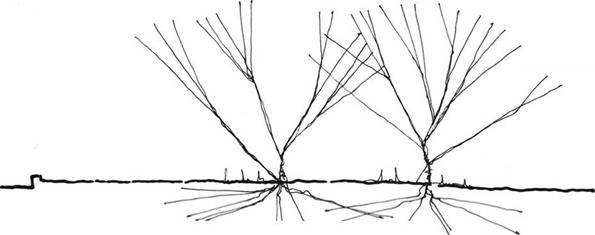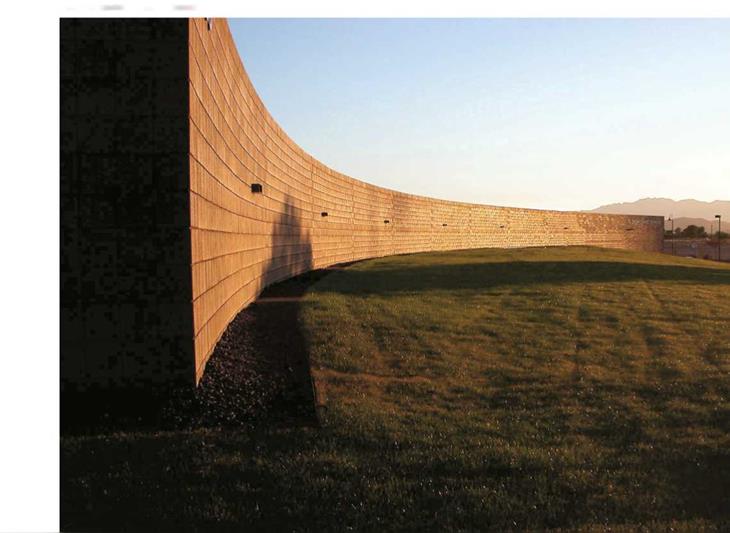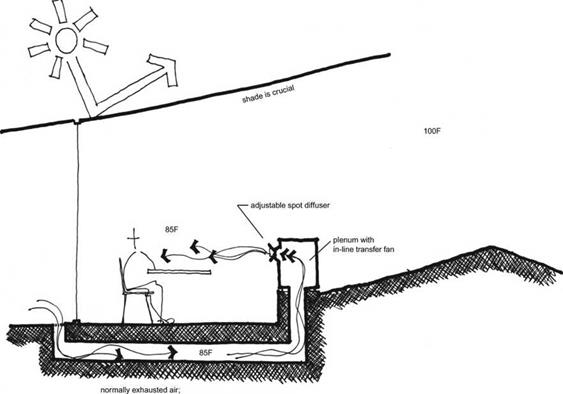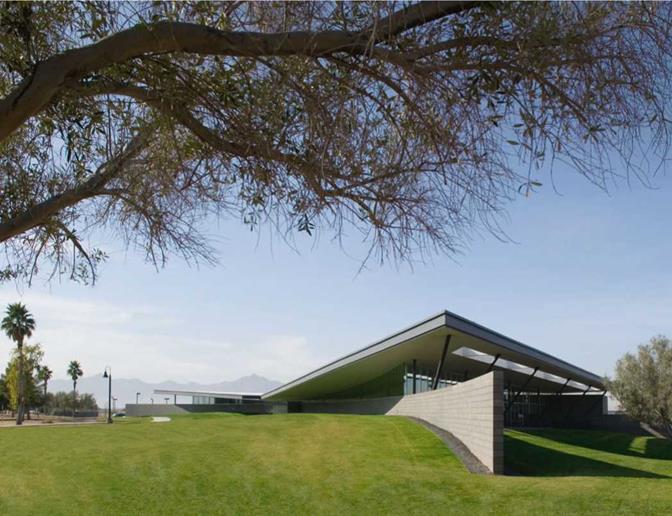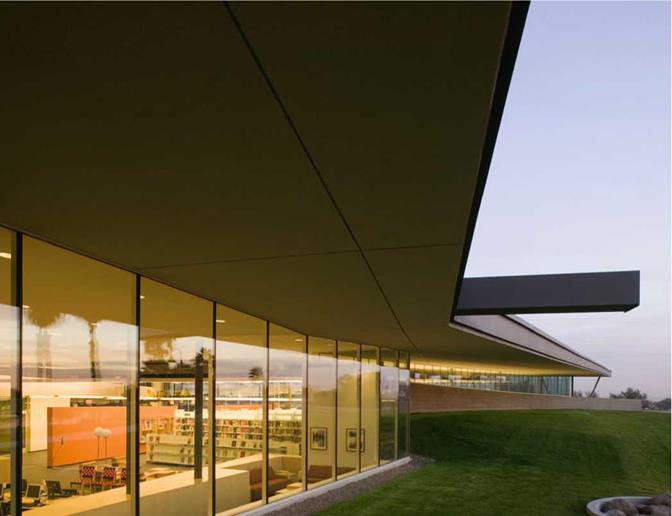Phoenix, USA
2007
Line and Space, LLC
www. lineandspace. com
Phoenix, the capital city of Arizona, is home to a population currently counted as the sixth largest in America. The Cesar Chavez Library was constructed to serve the village of Laveen, a fast growing area of dense housing in the south of the city.
The 25,000 square feet library houses approximately 140,000 volumes, (Fig. 2) including books, periodicals, CD’s and DVD’s. 60 computers with internet connection are provided for public use, with an integrated computer training facility. Teenagers are accommodated in a dedicated area which includes audio and visual facilities to promote reading, relaxation and rejuvenation. Younger children are catered for with quiet areas for story reading and homework help. A 75 seat community meeting room completes the facility. The roof design is one of the most important
environmental features of the library (Fig. 5, Fig. 6). Projecting well beyond the building’s facade, the overhanging roof reduces energy consumption by insulating, shading and, consequently, cooling. The outdoor shaded areas, fitted with furniture for resting and reading, provide a transitional space between the harsh glare of the outdoors and the library interior. These outdoor reading patios also benefit from supplementary conditioning. Diffusers exhaust spent air from the conditioned indoor space to create a more temperate microclimate in these respite areas (Fig. 5). Furthermore, earth berms were developed to provide a thermal mass for the building, to supplement the mechanical heating and cooling systems. The berms also provide a natural sound barrier to help reduce the noise transmitted from the adjacent traffic (Fig. 1, Fig. 3).
|
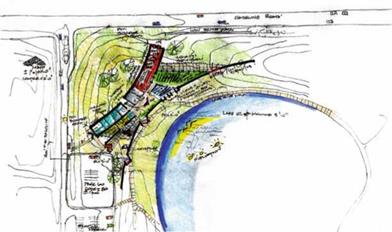
26 Cesar Chavez Library | Phoenix | USA | Fig. 1. above | Fig. 2. opposite
J. A. Flannery, K. M. Smith, Eco-UrbanDesign, DOI 10.1007/978-94-007-0369-8_3, © Springer Science+Business Media B. V. 2011
|
|
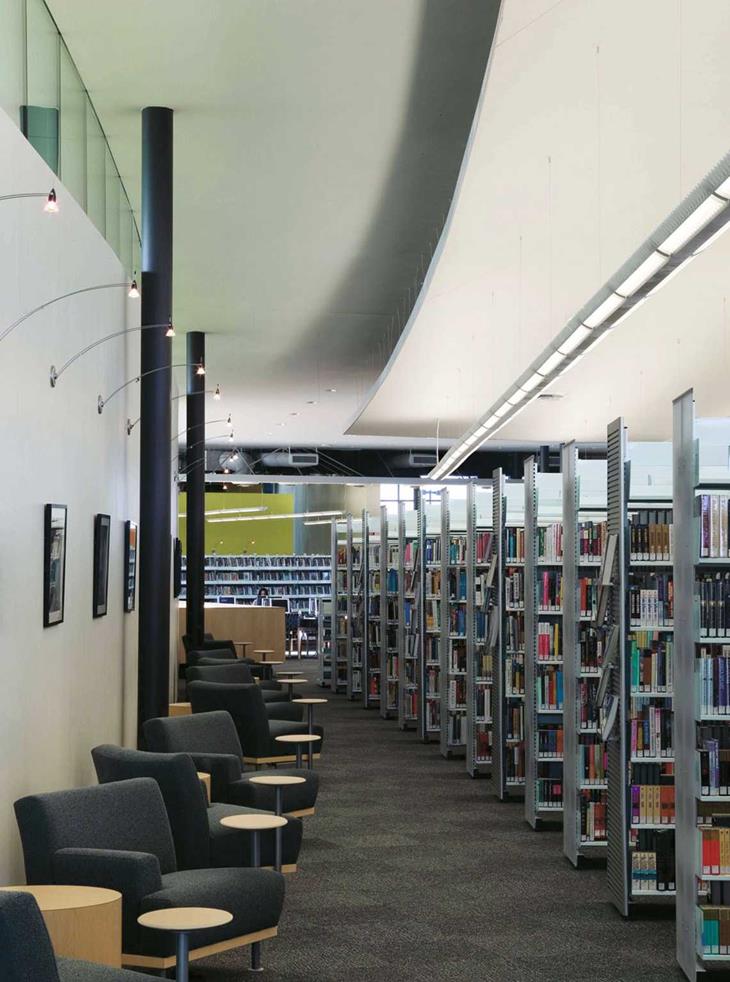
|
|
|

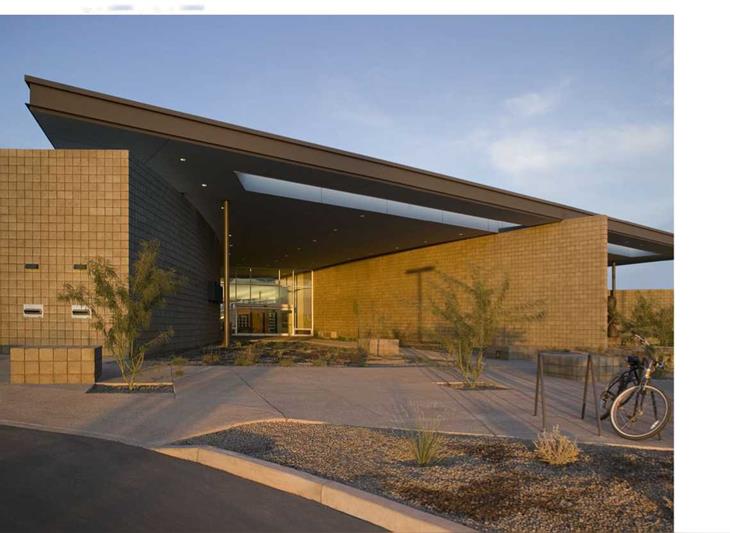
|
|
|
|
|
The principal design strategy for this public building is led by the topography of the chosen site. When the lake was constructed (approximately fifty years before the library) the excavated earth was utilised on site to form curved mounds for the park. The library design team avoided costly earth moving by cleverly integrating the library structure into the existing mounds.
Carefully planned orientation of the building and its fenestration allows natural daylight to penetrate deep into the library interior through glazed facades on the north and south elevations, see (Fig. 9) next page. This feature helps to reduce reliance on artificial lighting. The potential of detrimental solar gain from the prolonged effects of sunlight in the western desert sky is eliminated by constructing walling without windows on this vulnerable elevation. These careful radiation studies further reduced the load on the building’s electrical and mechanical units.
Another major design consideration deals with the catchment and utilisation of the precious rainwater that falls only sporadically in the desert city. Again, the roof design is fundamental to the strategy. 37,000 square feet of roofing is sloped to a central channel (Fig. 8, Fig. 9). This channel is capable of coping with storm quantities without costly overflow, allowing all the rainwater to run off to a splash basin constructed at ground level. The splash basin efficiently drains the rainwater into the existing lake. Water is then drawn from the lake to irrigate the parkland planting. The condensation generated by the library’s mechanical units is also collected in a manifold and directly routed to irrigate plants via perforated pipes (Fig. 10).
The public park and lake served as a recreational outdoor breathing space for the community, however, the new library facility is designed to enhance the outdoor space by providing a welcoming ‘living room’ that all family members can now enjoy.
The life lived by labour leader Cesar Chavez exemplified many aspirational principles. These same principles of community as family, cultural awareness, peaceful co-existence and the shelter and protection of the industrious peoples of the American South West are all embodied in the holistic library building delivered by the architects, Line and Space, and their collaborators in the design and construction of this exemplary project.
Cesar Chavez Library | Phoenix | USA 31
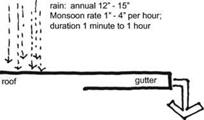
|
|
|
|
|
|
|
|
|
|
|
|
|
|
|
|
|
|
|
